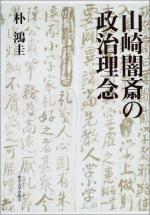|
This section contains 437 words (approx. 2 pages at 300 words per page) |

|
Yamazaki Ansai, the Japanese Confucianist notable for his ethical bent and Confucian rationalization of Shintoism, was raised at Kyoto in a Buddhist monastery. He was so unruly that he was sent to Tosa (now the city of Kōchi) on Shikoku Island, where he came under the influence of Tani Jichu (1598–1649), the originator of the southern branch of the Zhu Xi school of Confucianism in Japan. Having discarded Buddhism, Yamazaki taught Zhu Xi Confucianism in Kyoto and Edo (Tokyo) from 1648. Uncompromising in character, he condescended in 1665 to become the official scholar of Hoshina Masayuki, lord of Aizu (in northeast Japan). At Hoshina's death in 1672 Yamazaki returned to Kyoto and developed his Confucian Shintoism.
Though a stern Confucianist teacher he gathered around him more than six thousand students; among the best were Asami Keisai (1652–1711), Satō Naokata (1650–1719), and Miyake Shōsai (1662–1741). They formed the Kimon or...
|
This section contains 437 words (approx. 2 pages at 300 words per page) |

|


